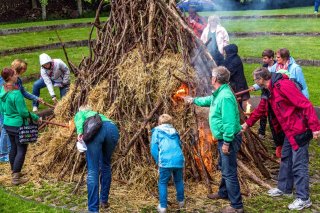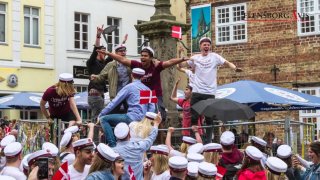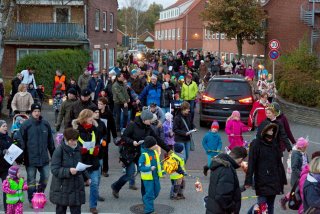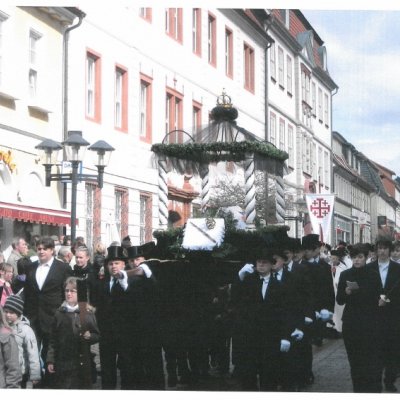Register of Good Safeguarding Practices
The German-Danish Minority Model in the borderland
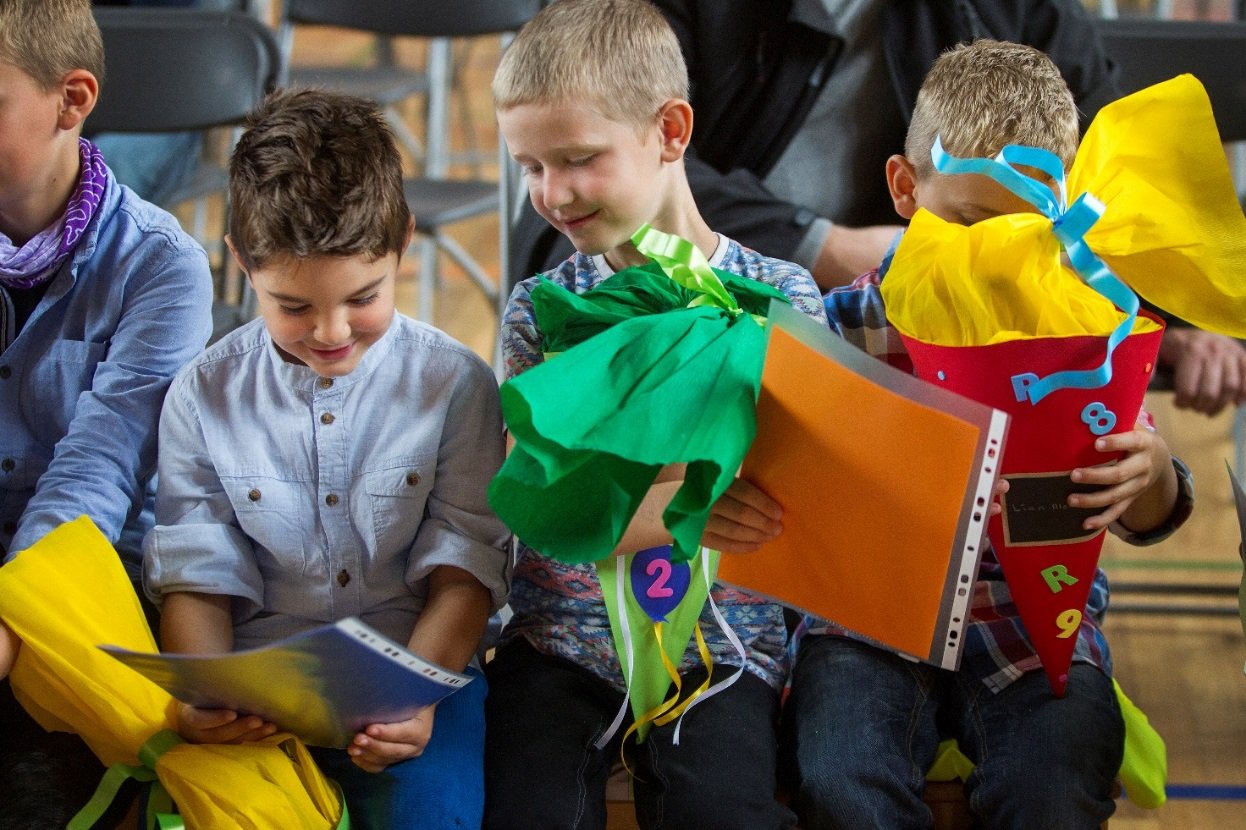
Minorities and majorities today live together peacefully in the German-Danish border region, after having suffered from a long period of conflict. Strong mutual respect and cooperation has emerged in recent decades due to political interventions and active commitment of all communities in the borderland. Their respective activities are highly appreciated among the inhabitants and contribute significantly to the diversity of the region and enable the majority population to gain an insight of the “other” culture. Even groups from abroad come to the German-Danish border region to get to know the model.
Facts & figures
- Crucial date: throughout the year, continuously
- Inscription: 2018
- Domains: forms of social self-organization; social practices, rituals and festive events; oral traditions and expressions, including language as a vehicle of the intangible cultural heritage
- Where to find: German-Danish borderland, North/South Schleswig
Both minorities, the German minority in the Danish part, called North Schleswig, and the Danish minority in the German part, called South Schleswig, are well integrated into the respective society. That way, a broad sense of tolerance is deeply entrenched in the German-Danish borderland. In connection with the use of the German language in Denmark and the Danish language in Germany, their activities form important building blocks of cultural self-determinantion. The Danish-German minority model is based on the recognition, appreciation and support from the majorities to minority community activities. Safeguarding the multitude of practices, representations, expressions, knowledge and skills of Intangible Cultural Heritage in the region occurs on many levels and involves the participation of people from all strata. Today, the borderland is a region that values its diverse Intangible Cultural Heritage characterized by differences and commonalities. The aim is not cultural assimilation. It is to ensure peaceful integration of communities through governmental support, mutual appreciation and by raising awareness of the Intangible Cultural Heritage within the region. This has led to the development of shared cultural heritage which also defines the region today. Annual festive events, such as the Knivsbergfest of the German minority in Denmark and the Aarsmøde of the Danish minority in Germany provide not only a sense of continuity and identity within the minorities, but are also recognized by the majorities as part of Intangible Cultural Heritage of the region.
A variety of associations of the respective minorities conduct a multitude of good safeguarding practices. Working mainly voluntarily, members of those associations also contribute to the promotion of democratic values and developing a peaceful civil society. The respective minority language is maintained thanks to practicing the communities‘ traditions. On a daily level, the activities of minority associations and social clubs are vital in promoting and transmitting Intangible Cultural Heritage. Social events such as concerts, games, community sport activities and other social gatherings, talks on the history of and culture in the region, and the annual festive events are organized in a collaborative manner.
These safeguarding measures of the minorities receive financial and political support from governments as well as from legislative bodies on national and sub-regional level. Derived from the Bonn-Copenhagen-Declarations minority members are citizens (and taxpayers) of the state in which they live, thus deserving equal state support in every respect. The support encompasses educational institutions like minority-driven kindergartens and schools, a wide range of cultural events, minority churches – e.g., the Danish State Church employs ministers to provide German church services – and a multitude of clubs and associations.
Recognizing language as not only a vital component in the shaping of identity and sense of belonging, but also as a pivotal means to inter-human understanding, several municipalities e.g. the city of Flensburg in Germany, provide part of their service in Danish and in German. The German State of Schleswig-Holstein funds lifelong learning language courses in German and Danish targeting both minorities and majorities as part of an official language policy to enhance public bilingualism. Danish public schools in the borderland have enhanced their education in German language and vice versa, and the German minority supports the Danish government’s official Germany-strategy through the project „Grenzgenial“, which supplies educational material in German to Danish schools.
Kindergartens, schools, libraries, cultural associations, and social clubs all run by the minority communities play a central role in transmitting festive events, knowledge, oral expressions, and social practices to the next generation. Through formal and non-formal education, they strengthen language as a vehicle of cultural identity, transmit song traditions and pass on cultural and pedagogical practices.
The Intangible Cultural Heritage is also passed on in families from generation to generation. Encouraged and supported by the institutional activities, parents transmit traditions with Danish or German origin to their children and strive for their attendance of minority schools and kindergartens. In reverse, parents’ awareness for traditions can also be raised by their children attending schools and kindergartens where they practice them.
Seasonal activities with their particular traditions are important in shaping community identification: School cones, on the children’s first day in school and the Lantern Festival on St. Martin’s Day in November – figuring on the Intangible Cultural Heritage inventory of the German State of North Rhine-Westphalia – where children and parents walk through the neighborhood of their kindergarten or school singing traditional “lantern songs” are typical German practices that are passed on within the German minority in Denmark. Skat tournaments – a German card game recognized as Intangible Cultural Heritage in the nationwide inventory – and Eisbeinessen – a German culinary specialty enjoyed in groups are among the activities in the local clubs of the cultural umbrella organizations. The Danish minority in Germany beats the Cat off the Barrel at carnival – a tradition on the Danish national Intangible Cultural Heritage inventory – and during Christmas, the Lucia Maidens sing a traditional hymn wearing white robes and carrying a candle walk in a procession. The St. Hans Fires on 23 June close to midsummer where a large bonfire is burnt and the tradition of Dancing Around the Christmas Tree – processing around the tree holding each other’s hands singing carols – during Christmas parties in December are also traditions shared in large parts of Denmark.
Museums, archives and research centers are deeply involved in research, identification, documentation and publishing on Intangible Cultural Heritage of the region. The Danish minority’s Danevirke Museum contributes to safeguarding the community’s Intangible Cultural Heritage by telling stories regarding the seasonal traditions and documenting as well as exhibiting related objects. The German minority museum will include the archive of the German minority and its historical research center in a new building. The museum is currently working on a new permanent exhibition opening in July 2020 which will focus on identity.
Together with the Federal Union of European Nationalities (FUEN) and other institutions, the minorities of the borderland also cooperate with other minorities in Europe and beyond by exchanging experiences. Consequently, many groups from abroad, for example from Ukraine, the Baltics or the Western Balkans have already visited the German-Danish border region in order to get to know the minority model on the spot. In terms of its international impact, it is appreciated as a powerful example for successful conflict resolution and for the peaceful coexistence of minorities and majorities along a border.


